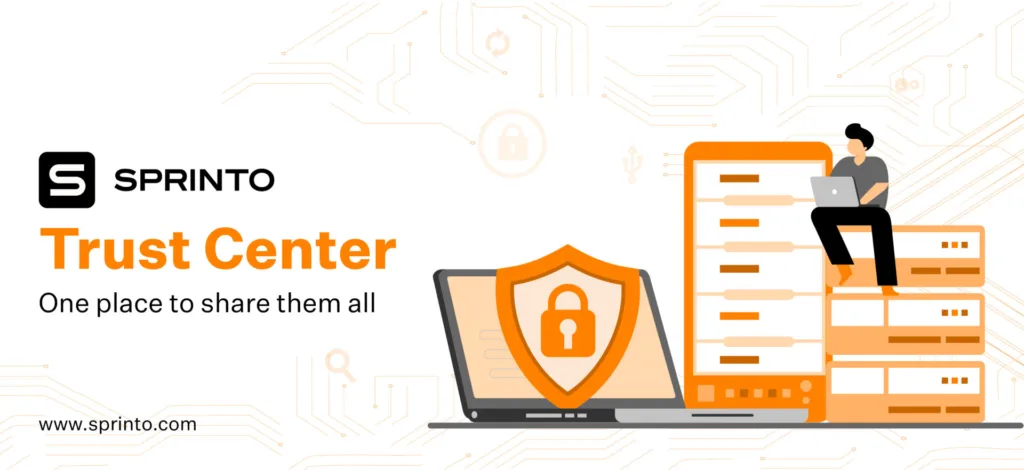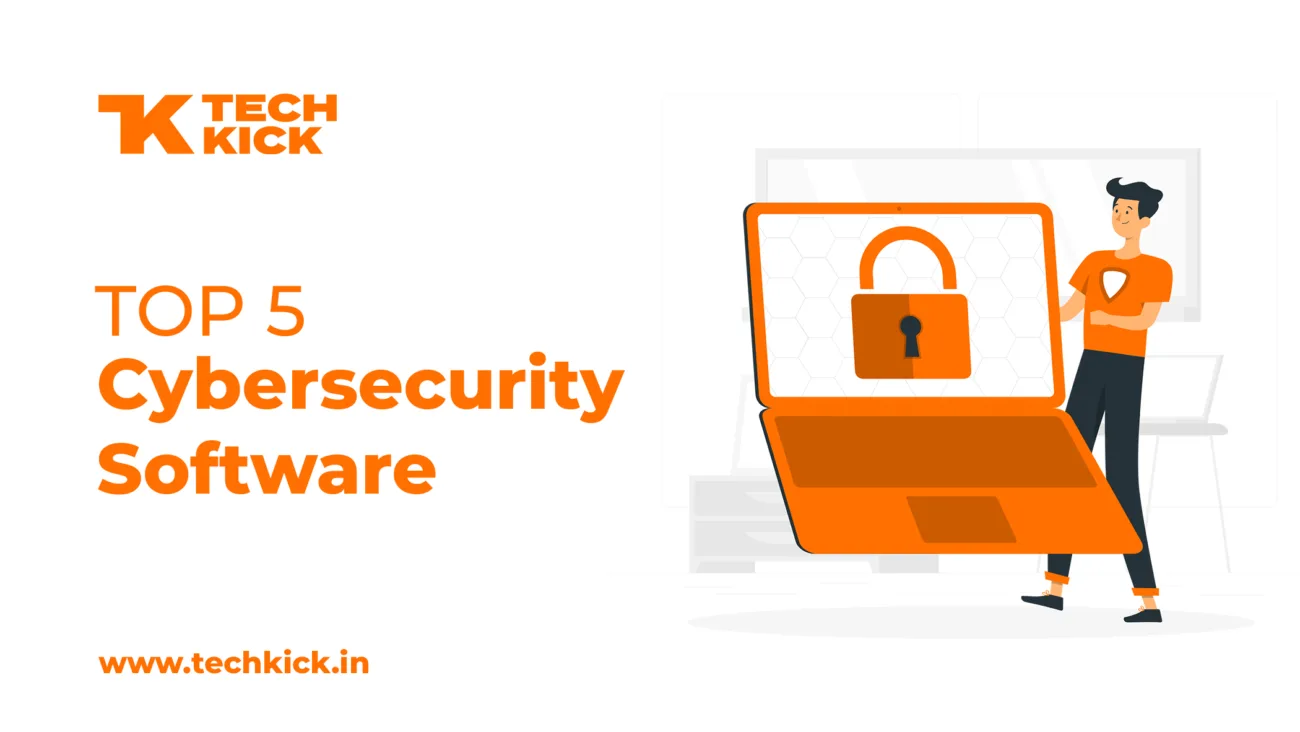You already know that Cyberattacks are becoming more common and advanced because all the information, money, normal business processes, etc. are online.
And then, there is a need to protect our systems, networks, and programs from cyberattacks. And for protection, you have to use the cybersecurity systems.
However, It can be difficult to keep up with the demand for strong defenses. Therefore, CyberSecurity becomes necessary.
Thankfully, there are many powerful CyberSecurity Software available online that offer the cyber protection you require at an affordable price.
Today, In this post, we are going to tell you about the Top 5 Cybersecurity Tools that help to defend the Malware.
| Table Of Content |
| 1. What Is Cyber Security? |
| 2. Why Do We Need Cyber Security? |
| 3. Top 5 Cyber Security Tools. |
What Is Cybersecurity? Cybersecurity Definition
Cybersecurity protects your systems, networks, and sensitive information from online threats.
By understanding the methods of cyber threats and cybersecurity, we can fortify and protect ourselves against various online attacks, such as phishing and Distributed Denial of Service (DDoS) attacks.
What is Phishing?
Phishing is a type of cybercrime where a person or group tries to obtain sensitive information, such as usernames, passwords, or credit card details, by acting as a trustworthy entity in an online message.
What is DDoS?
Denial of Service (DDoS) attacks are a type of cyberattack where hackers flood a target system with an excessive amount of traffic, making it unavailable to authorized users.
Cybersecurity employs measures like firewalls and antivirus software to protect your devices from malicious hackers and viruses.
Encryption is a method that ensures the confidentiality of your data, allowing only authorized individuals to access it.
Additionally, cybersecurity educates you on identifying various tactics, such as phishing, etc. In essence, cybersecurity ensures the safety and integrity of your digital presence.
Why Do We Need Cybersecurity?
Cyber Security software is essential for any group as it protects various kinds of information from unauthorized access and data theft. This includes medical records, client information, creative assets, and confidential company information.
On a worldwide scale, data published by a business incurs an average expense of $4.35 million on Cybersecurity. Companies must utilize cybersecurity solutions to counter the growing risks and cyber criminals who are keen on acquiring information, interfering with operations, and extorting money.
For instance, a cybersecurity solution equipped with automation features is essential for identifying and reacting to security incidents to safeguard the company’s interests. The three fundamental components are personnel, technology, and procedures.
Furthermore, authorities across the globe enforce regulations to safeguard the personal and user information of customers from being stolen or misused, and from being accessed by unauthorized individuals.
Related Post:
- Is Bluestacks safe for PC? Here is the necessary information.
- How to Send WhatsApp Messages Without Saving Contacts: 5 Easy Ways.
Top 5 Cyber Security Tools of 2024
- Wireshark
- Sprinto
- Kali Linux
- NMap
- ForcePoint.
1. WireShark.
Wireshark is a freely available tool that operates through a console interface, designed for examining network protocols. It is utilized by experts in cybersecurity to evaluate vulnerabilities in network security by constantly capturing and examining data packets.
Key features of WireShark:
- Compatibility across different platforms such as Windows, Linux, OS X, FreeBSD, etc.
- Open-source architecture with relatively easy integration,
- Data is captured and analyzed in real-time data
- Multiple networks and various output formats are supported by decryption protocol supports.
2. Sprinto

Sprinto is a tool designed for cybersecurity and ensuring compliance that performs detailed, automated verifications to guarantee comprehensive security throughout various operations. It aids in identifying vulnerabilities and applying measures to fix them.
Key Features of Sprinto:
- Continuous control monitoring: Ensure implementation of controls like firewalls, encryption, antivirus, and more with real-time control monitoring of critical infrastructure.
- Access controls: Create, edit, and manage user access privileges to prevent unauthorized access.
- Endpoint security: Manage and report endpoint device safety with Sprinto’s baked-in MDM tool Dr Sprinto.
- Health dashboards: Verify security and compliance health from a centralized dashboard with a quick snapshot of passing, failing, due, and critical checks.
- Security Awareness Training: Publish built-in security awareness training across the organization to ensure security best practices.
3. Kali Linux
Kali Linux stands out as one of the leading and easily accessible options for cybersecurity solutions. It provides access to more than 300 tools that businesses employ to monitor their network systems for weaknesses. A key benefit is that the platform is customizable for specialists of various levels.
Key Features of Kali Linux:
- Compatible across multiple devices and environments.
- Open-source product with easy integration.
- Highly useful in security auditing with a specialization in penetration testing.
- Contributions and developments from a massive community of users.
4.NMap
NMap is also referred to as Network Mapper, It is a cost-free and freely available cybersecurity application in Cyber that examines IT systems and networks to pinpoint security weaknesses. Moreover, it allows experts to track the availability of hosts, describe potential attack zones on the network and services, and implement substantial security measures as needed.
Key Features of NMap:
- Nmap is compatible with all popular operating systems.
- Irrespective of the size of the network, it enables experts to scan for vulnerabilities on the web,
- Provides a detailed overview of the activities of the network on a single dashboard, such as the hosts that are connected to the network, the types of packet filters and firewalls deployed to keep the network secure, the operating system it runs on, etc.
5. Force Point
Often utilized by network and security administrators, Forcepoint aids in tailoring SD-Wan, ensuring that only permitted individuals can view certain content within resources. Forcepoint assists in monitoring harmful actions in the network. Consequently, this allows for the application of necessary measures and observation to regulations for resolution at a later time.
It can be installed on-site or in the cloud. Installing in the cloud prevents servers that could potentially harm the systems. This capability enhances the security oversight of employees working remotely.
Key Features of Force Point:
- A high level of security in applications having significant data,
- Seamless integration for fingerprints, policies, and classifiers across all channels.
- Interference of site can be blocked with a high level of customization and the probable exploitation of vulnerabilities,
- Provides real-time classification and content analysis,
- Third-party global and cross-portfolio shared threat intelligence network.
Conclusion
The importance of cyber security in today’s online landscape cannot be over-emphasized. Security violations can have a destructive effect on both companies and people.
This includes the unauthorized acquisition of personal identification numbers, financial data, account figures, and confidential information. Such incidents have underscored the necessity for robust cybersecurity protocols.


I dugg some of you post as I thought they were invaluable handy